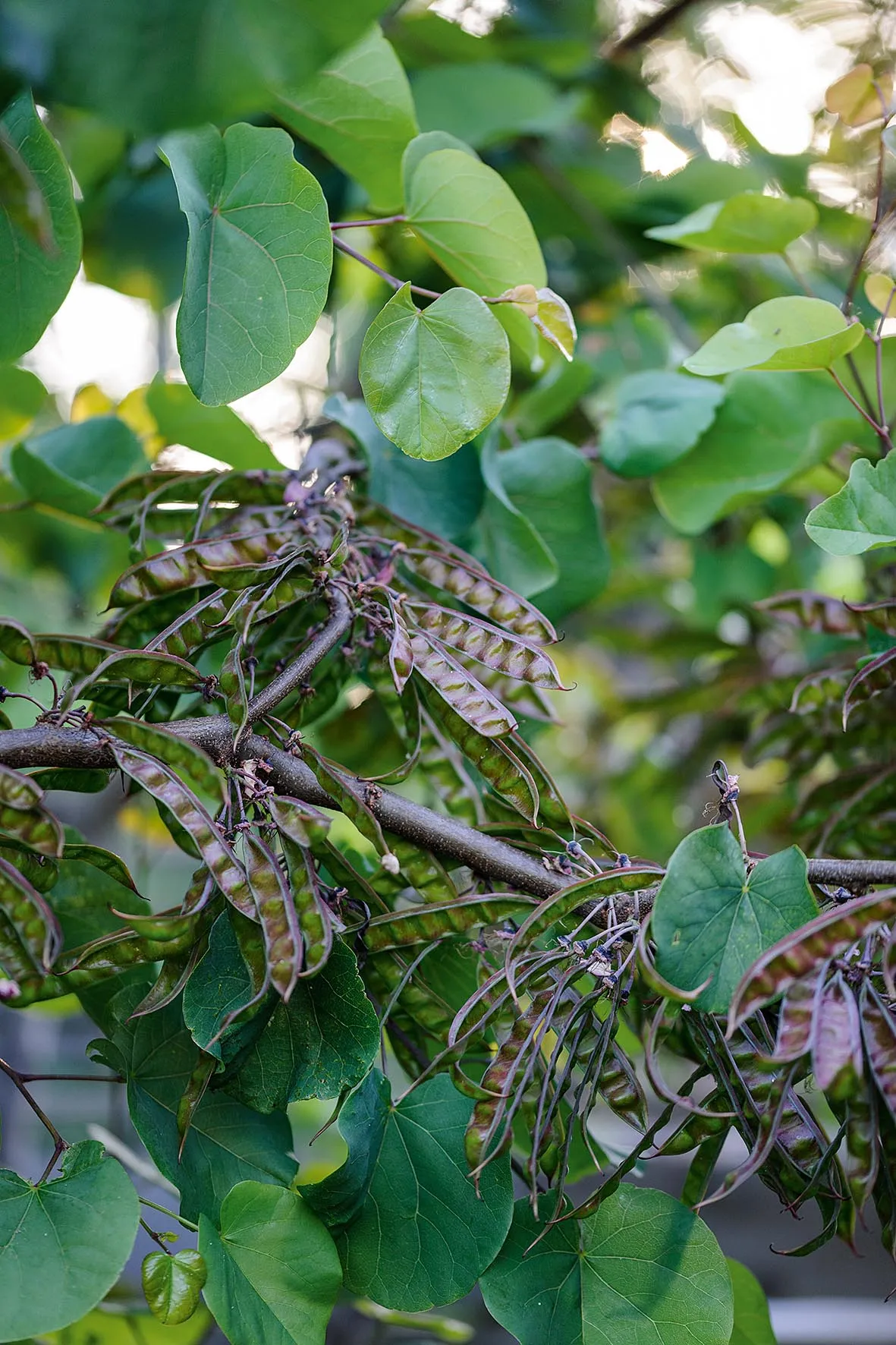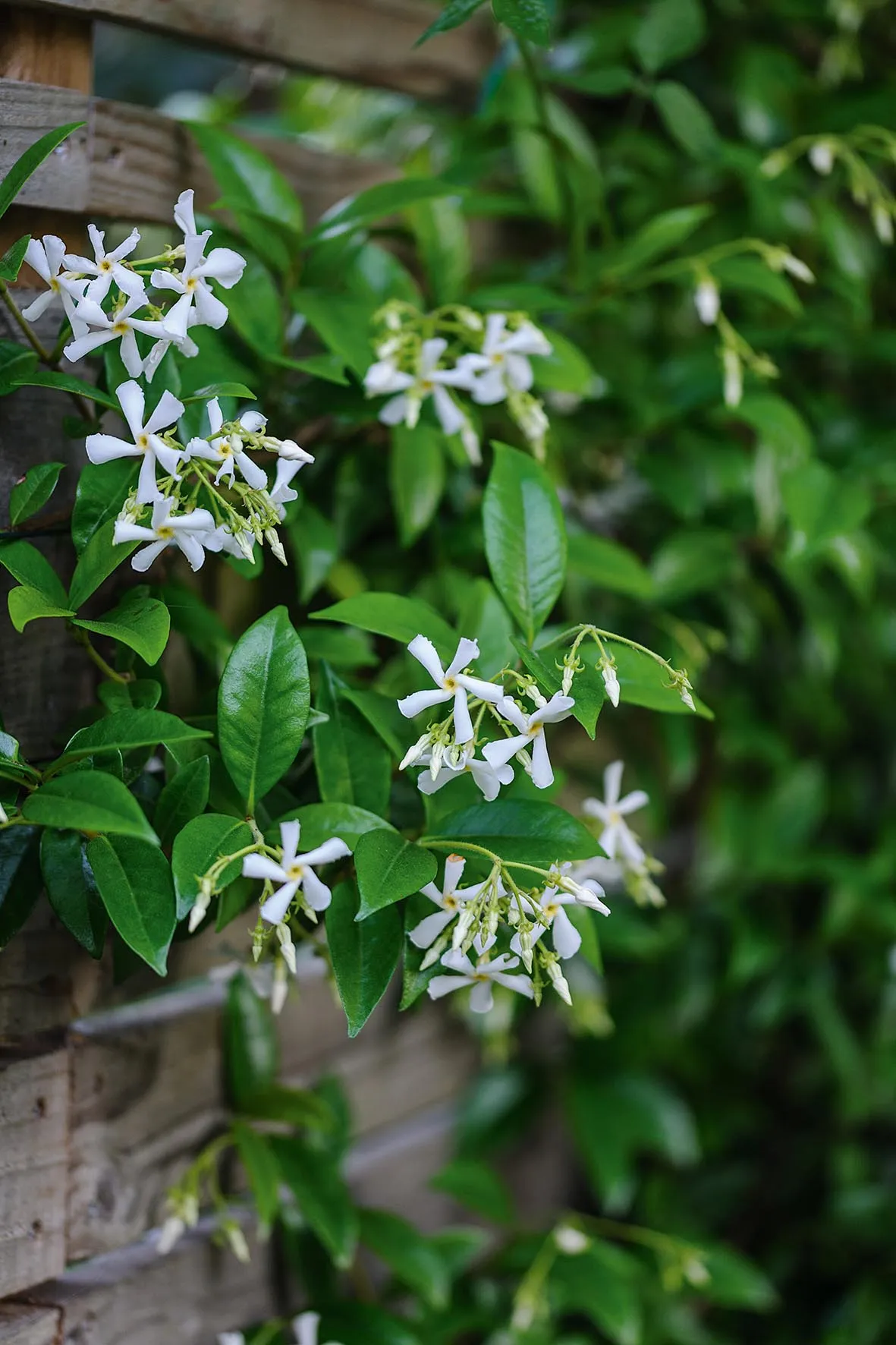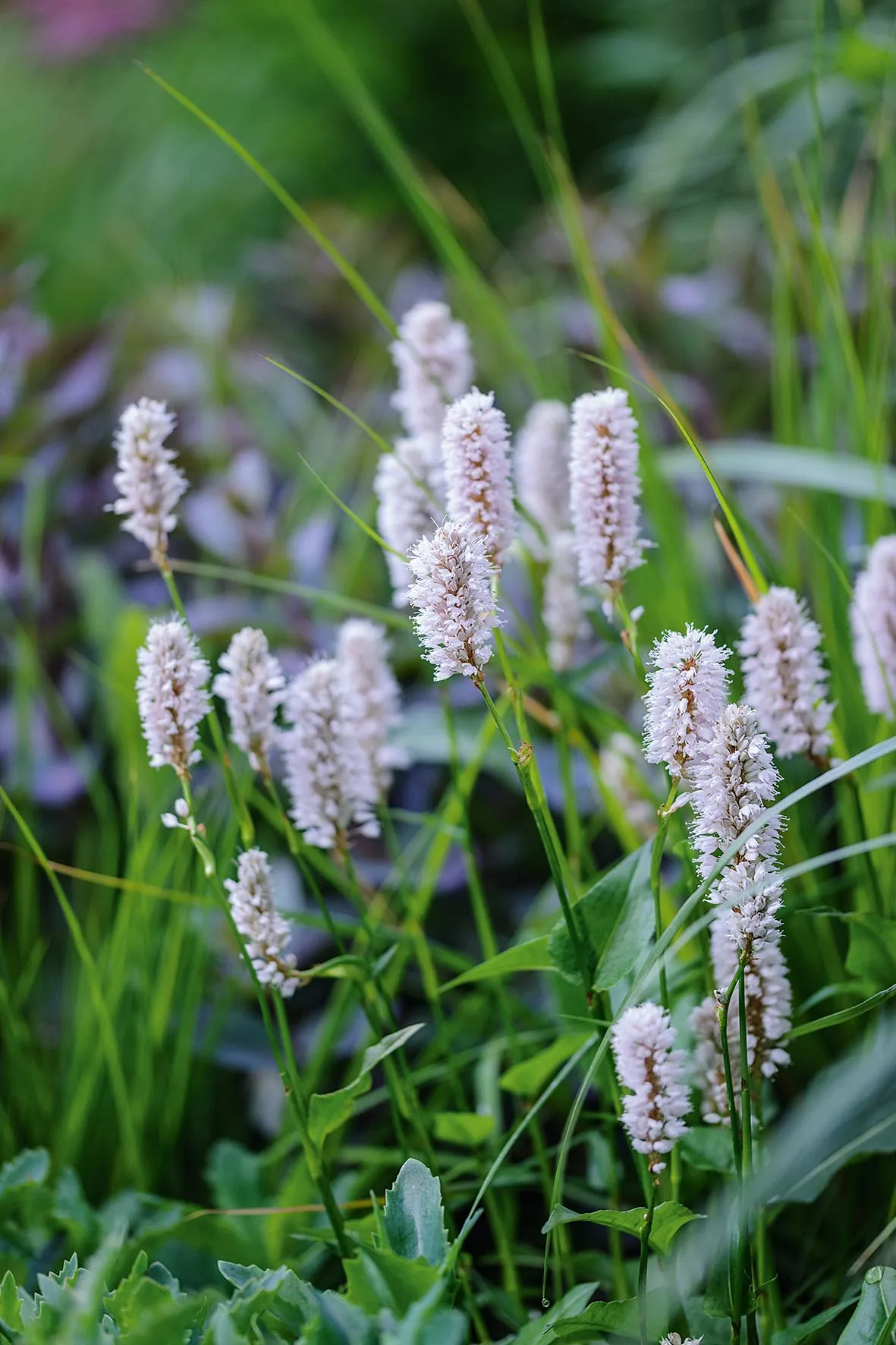In brief
What Small urban garden. Where London. Size 17m x 5m. Soil London clay. Climate Temperate; partly sunny, partly shady. Hardiness zone USDA 9.
The theme
Every time Emily Erlam is commissioned to design a garden, she is in it for the long haul. The long-lasting relationships with the gardens that she creates, and their owners, come with the territory. A small London garden she designed six years ago for an artistic couple is typical of her involvement. She is still part of its ongoing evolution, but is keen to applaud her clients’ commitment. “They physically built this garden and understand how to make it work. The way they maintain the plants, and work with the minutiae of the detail, is key to its success.”

Building the garden
Building the garden themselves was integral to the clients’ brief. So too was the emphasis on usability, and a desire for a meaningful relationship between the kitchen extension, with its expansive glass doors, and the outside space. The long, narrow, north-facing garden is overlooked, but not much shade is cast by the neighbours, making it unusually sunny for London. Mature trees over the boundary walls breach the cityscape and create a leafy surround. Otherwise, Emily was free to indulge her passion for creating a strong sense of place.
The bones of the garden are simple. Beyond a small patio outside the extension, the space is delineated by two double rows of box (Buxus sempervirens) clipped into spheres. A narrow path travels along the west side of the garden towards a sunny dining spot via two seating areas. “I’m a minimalist designer,” says Emily. “I start with a strong and uncomplicated structure so everything feels purposeful, but then I weave in an environment to break the structure up.”
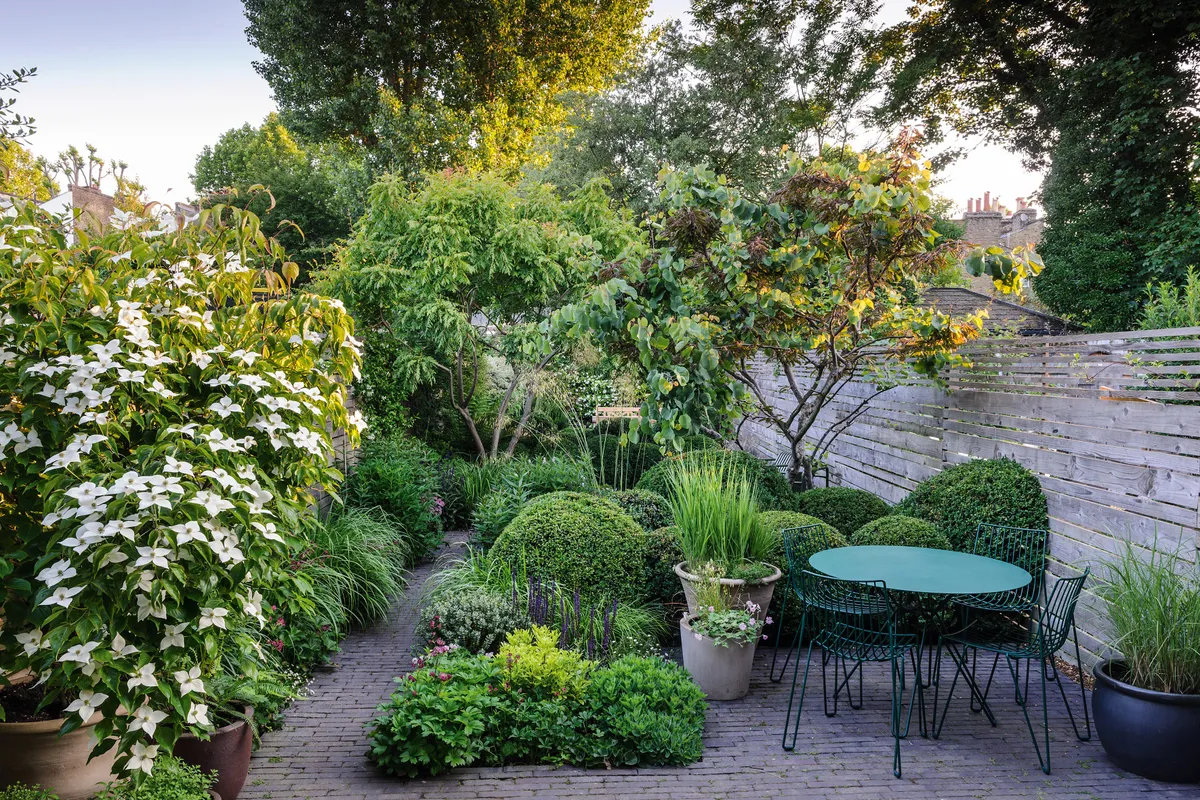
Patterned with light and shade, there is movement that passes through the space between intimate moments that are nurturing and calm, and those that are open and uplifting. “I wanted to create a distinction between the different spaces and so a transition between the felt sense of the garden,” Emily explains.
Multi-stemmed shrubby trees, Koelreuteria paniculata and Cercis siliquastrum, their lower branches removed to accentuate sculptural canopies, create pinch points and a sense of intrigue.
But the distinction Emily wanted has also been achieved by a space empty of planting halfway along the east side of the garden. A naked wooden fence ages gracefully in full view, lending a silvery backcloth to a seating area. “The fence has had an influence on the pacing of the garden. It has paid off, because it’s calmer as a result.”
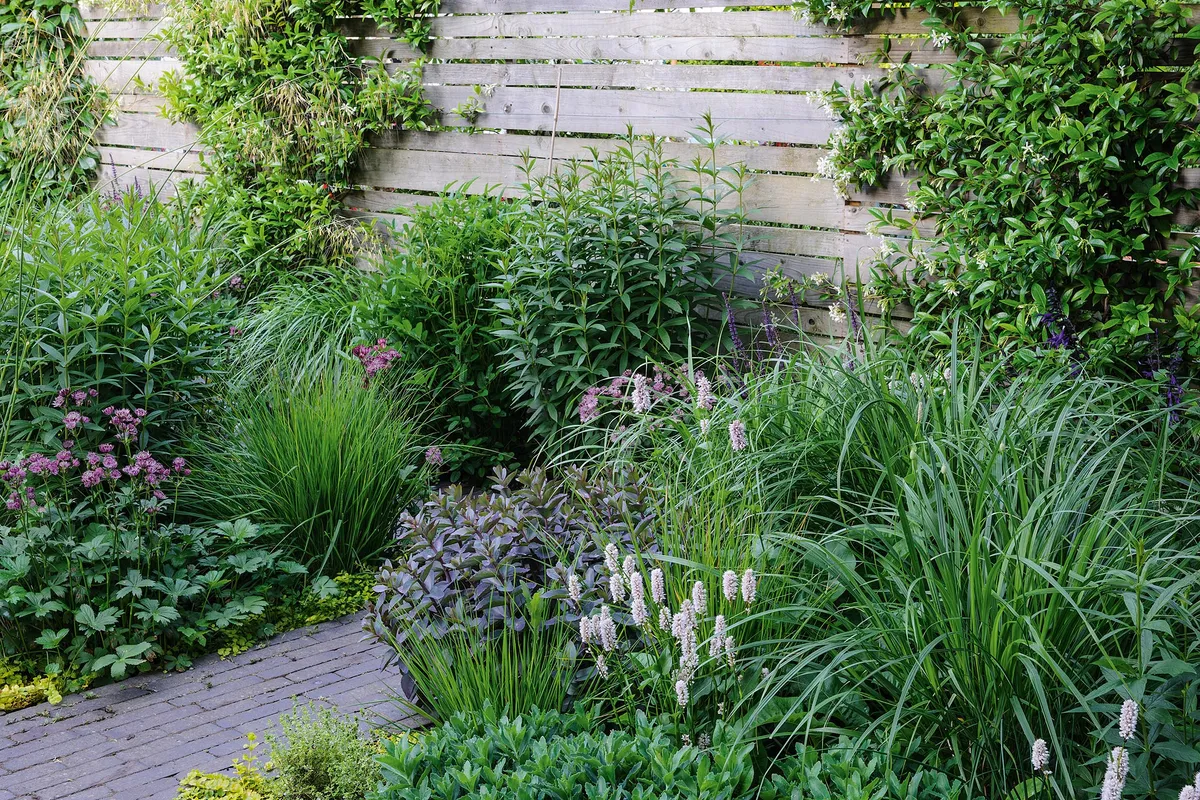
Soft, plum-coloured brick pavers link the seating areas with pockets of purple, pink and white planting. Climbers, herbaceous plants, bulbs and grasses are punctuated by evergreens for perpetual interest and there is a smattering of pots. “The same planting emerges all the time,” says Emily. “There is a process of repetition that increases in size each time it reappears.”
Careful thought has been given to the passage of the sun, which has influenced the choice of plants as much as the position of the seating areas. “I created a rhythm with the plants so found spots where the sun allowed that rhythm to continue”, says Emily.
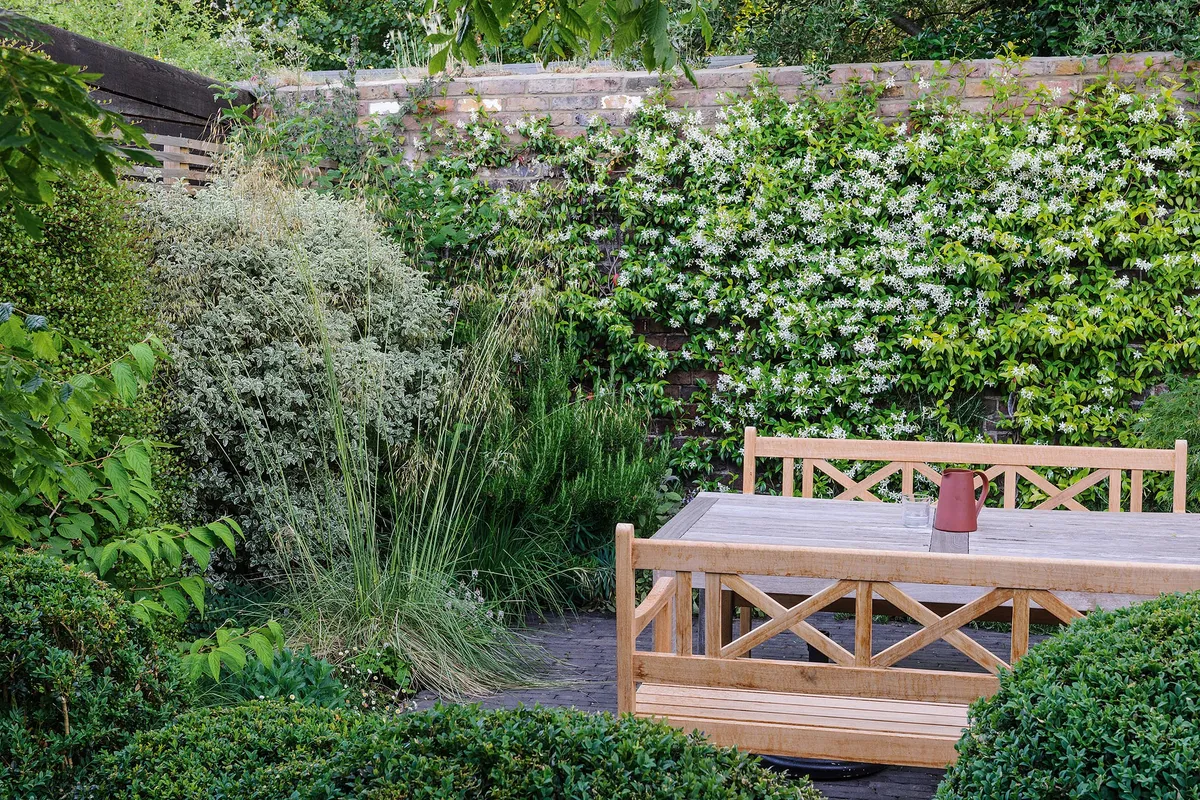
A cascade of sweet-scented Trachelospermum jasminoides tumbles down the shady west boundary wall at the patio end of the garden. Pale-lavender Persicaria bistorta rubs shoulders with Astrantia major, and Lysimachia nummularia illuminates the shadier border edges. Dusky Hylotelephium telephium ‘Purple Emperor’ revels in the sunnier spots with Salvia nemorosa ‘Caradonna’ and Veronicastrum virginicum f. roseum ‘Pink Glow’. The splendid grass Stipa calamagrostis, makes a bold statement among its flowery colleagues. “It is super-elegant and never turns to mush,” says Emily.
Herbs are woven throughout, more for their aesthetics than their culinary purpose. Thyme and oregano make successful edging plants, with small leaves and long flowering seasons. “I rarely find plants that work better than herbs for edging,” Emily says. “They are tough, they look natural in any environment, and knit the taller plants together.”
The whole effect is a delightful froth of colour, texture and scent. In this tiny space, it’s impossible not to get up close and intimate. “It’s a garden in which you feel very nestled away,” says Emily.

Keeping the proportions of this busy plant community in check is a balancing act. “Maintaining this garden is not just a simple clipping and trimming exercise. It’s about spacing and editing over time. In a small garden every plant counts,” she says, “otherwise the balance is disrupted and you lose the frothiness”.
Planting Ideas
These days, Emily tends to design larger, rural gardens, but she recognises that creating urban gardens is one of the more challenging aspects of her work. “Expressing and condensing an essence into a small space is really difficult.” Nevertheless, the owners’ passion and commitment for this gem of a city garden, along with Emily’s gentle guidance, has ensured that it is nothing but an unequivocal triumph.
Useful Information
Find out more about Emily’s work at erlamstudio.com.

